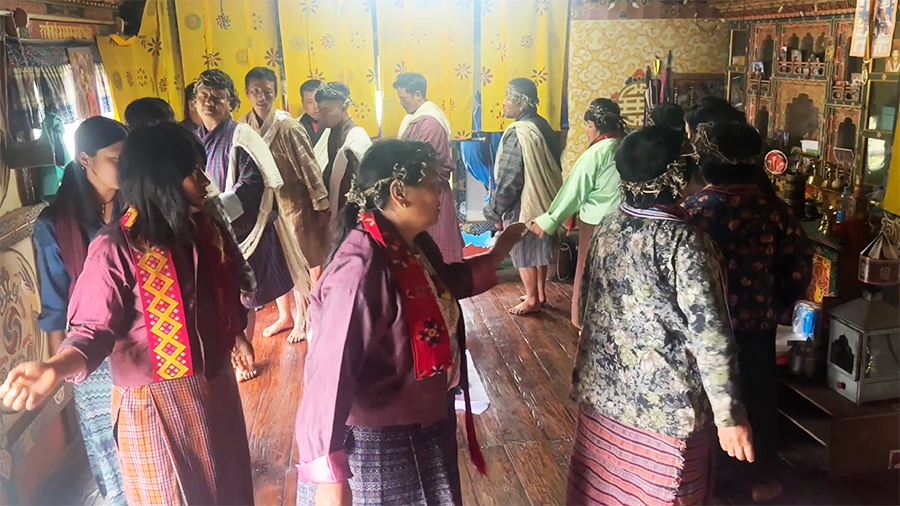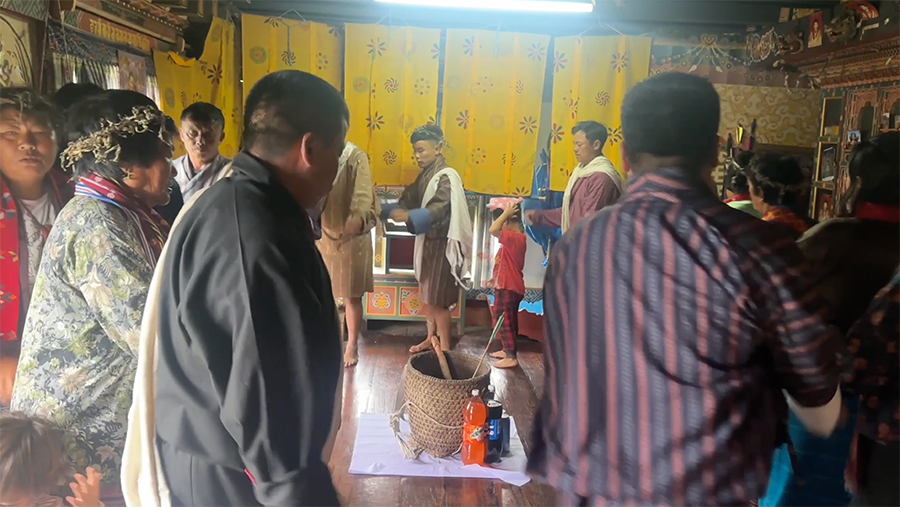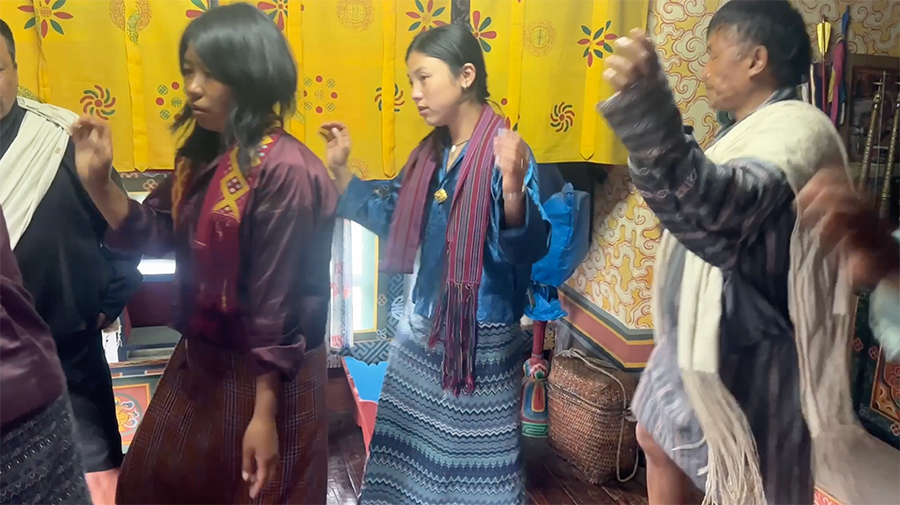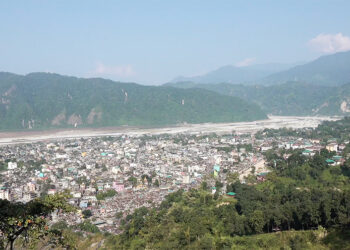 Once a vibrant celebration of faith and community, the Kharphu festival of Sershingthang village in Monggar now echoes with concern. As elders try to keep the tradition alive, they fear its chants may fall silent with them. They said fewer young people are participating in such occasions.
Once a vibrant celebration of faith and community, the Kharphu festival of Sershingthang village in Monggar now echoes with concern. As elders try to keep the tradition alive, they fear its chants may fall silent with them. They said fewer young people are participating in such occasions.
 The festival, a sacred tradition meant to appease local deities for protection and prosperity, lasts for a week. It is conducted after every two years.
The festival, a sacred tradition meant to appease local deities for protection and prosperity, lasts for a week. It is conducted after every two years.
The celebration begins by welcoming the local deity into every home by chanting rhymes to appease the deity, and offering food and drinks.
Villagers perform dances and symbolic gestures that have been passed down for generations.
 However, limited participation by the younger generation is becoming a growing concern.
However, limited participation by the younger generation is becoming a growing concern.
Elders worry the tradition could fade away if the youth do not learn and carry it forward.
According to records with the Saling Gewog Administration, there are 22 households in Sershingthang, with only 75 people currently living in the village. Records show that over 110 are working in other districts, while a few have gone abroad.
Pema Dorji, a resident said, “People are not showing interest in this festival. I lead this festival in our village so, I teach them. I am worried that after our generation, the festival might also vanish. Most of the youths who are in the village are so obsessed with mobile phones and apps such as TikTok. In the past, it is different. People had to adhere to the norms of the festival strictly and we celebrated the festival wholeheartedly.”
Likewise, Karma said, “We have been practising this ritual with utmost dedication and devotion. But, this is not the case with our youth. We can understand that those working in offices might not get leave but even if they do, they are not interested.”
Sonam Wangchuk, a college student said, “The festival coincides with exam time most of the time. For those of us who are in colleges, we can come and take part in the festival during the summer break but I have noticed those who are here are also not interested.”
Similarly, a young woman, Kezang Choki said, “I am not really aware of the significance of celebrating this kind of festival. I have been following what my parents and grandparents did to celebrate it. Moreover, the chants we sing are not understandable. The culture might disappear during our children’s time.”
Tshering Norbu, Saling Mangmi said, “We can notice the impacts of limited people participating in such activities. Already the festival is losing its focus as people perform only some segments of the festival. They are not able to perform the detailed performances like in the past.”
 The festival concludes with the men and women of the village dancing around a container filled with offerings. In a playful contest, both sides try to take hold of the container. In this household, the women emerge victorious, a win believed to bring blessings in the form of baby girls. A victory for the men, on the other hand, is thought to bless the family with male children.
The festival concludes with the men and women of the village dancing around a container filled with offerings. In a playful contest, both sides try to take hold of the container. In this household, the women emerge victorious, a win believed to bring blessings in the form of baby girls. A victory for the men, on the other hand, is thought to bless the family with male children.
As the celebration draws to a close, the local deity is respectfully seen off, with villagers holding onto the hope that their sacred tradition will continue for generations to come.
Namgay Wangchuk, Monggar
Edited by Tshering Zam








